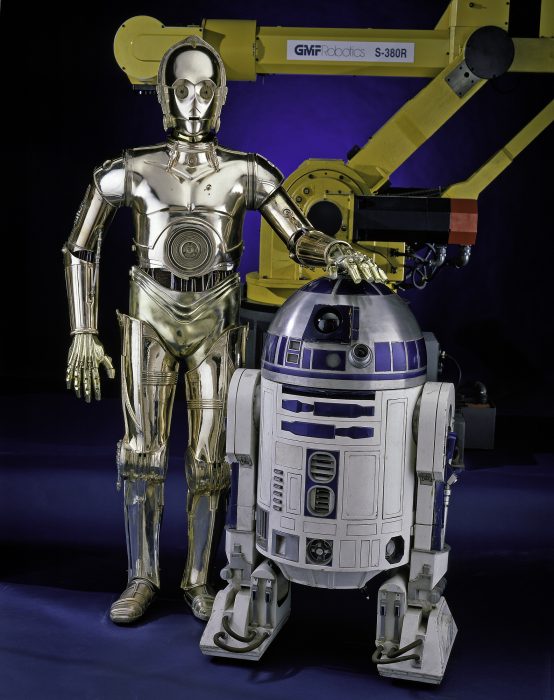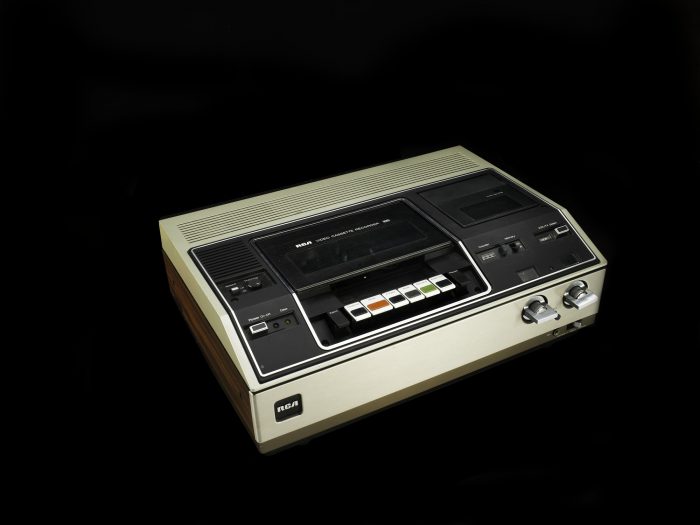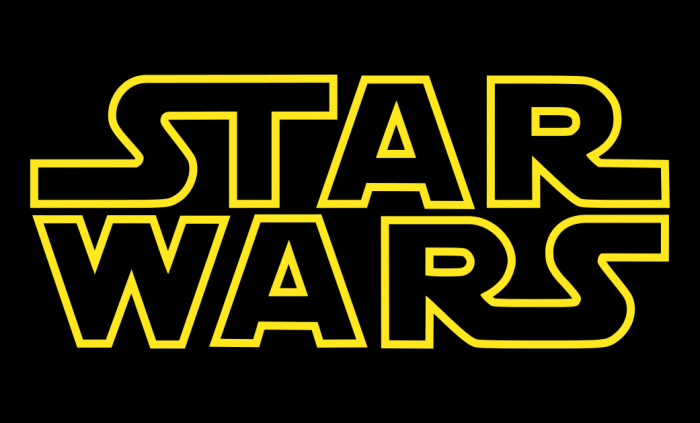Long, long ago in a galaxy far, far away
May the Fourth Be With You
This month marks the 42nd anniversary of the premier of the first “Star Wars” film. Matthew MacArthur explains how this iconic film enthralled a generation and why it still resonates today.
When the Virginia all-state student orchestra launched into the first thrilling notes of John Williams’s Star Wars theme, the lump in my throat was not just due to the fact that my daughter was a member of the violin section. Though parental pride and mixed feelings about her approaching high school graduation were definitely factors, the emotional significance was heightened by the fact that Star Wars, the movies and the music, has been an ever-present part of my life since my own childhood, a long time ago in faraway Southern California. It felt like coming full circle.
This month marks the 42nd anniversary of the release of George Lucas’s first Star Wars film, the “space opera” that took the world (er, galaxy?) by storm. I was solidly in the movie’s target demographic, an eight-year-old when the movie hit the theaters. At the release of the final episode of the initial trilogy, Return of the Jedi, I was 14. Like so many others, Star Wars was simply baked into my identity during those formative years. Knowing I am but one of many who are fans of the franchise (and by no means the most knowledgeable), as an anniversary tribute, I offer four reasons why the films became such an important part of my life.
The marriage of timeless familiarity and futuristic “otherness”
Lucas drew on a wealth of cultural tropes, familiar character types, and well-worn storytelling techniques in the creation of Star Wars. This made the story and the characters instantly comprehensible, even to an eight-year-old. There were good guys, there were bad guys, and there were rascals just looking out for themselves. There was even a sort of spiritual element that rang true. And yet, the setting was totally exotic and unfamiliar—and looked fantastic in fleshed-out detail, from the famous opening shot onward. This combination of factors meant that I (and so many others) could comfortably dwell in this world and grasp its moral code, while at the same time remaining free from any Earth-bound limitations. Through the exercise of imagination, it became both intimately personal and infinitely expandable. I realize now that the films’ famous tagline, “A long time ago in a galaxy far, far away…” sets up this dichotomy and is just another bit of Lucas’s genius.

In the fictional universe of George Lucas’ Star Wars films, robots called droids (short for android) come in many shapes and serve many purposes. Two droids–R2-D2 and C-3PO–have won enormous popularity for their supporting roles in all six of the series. In the collections of the museum are costumes of R2-D2 and C-3PO from “Return of the Jedi,” released in 1983 and the third film in the Star Wars series. (Photo courtesy National Museum of American History)
Merchandising
Star Wars’ sticking power was given a generous boost by the availability of a host of toys, books, and other ancillary products. Lucas’s plans for a licensed merchandise campaign were ambitious for their time. Even so, the supply of Star Wars figures and toys could not initially keep up with demand, taking a year or more to catch up. Who knew the movie would be so popular?
My nearby cousins, who were close in age and also avid fans, did their part to make the Star Wars merchandising effort a multi-billion dollar juggernaut (their parents were a little less tight-fisted than mine). We spent hours “playing Star Wars” together. My favorite memory is of a miniature cantina set we created using multiple figures, complete with music and disco light. We enjoyed poring over Star Wars encyclopedias, and traded notes about novels set in the Star Wars universe. For so many of us, this type of play kept Star Wars alive in the imagination, especially during those long waits between movies.
And still it continues as another generation “plays Star Wars,” though some of the forms might have changed. Fueled by books, Star Wars Lego sets, video games, and the like—including of course, the movies, which can now be seen on demand—my kids have become perhaps even bigger Star Wars nerds than I am, though it pains me to admit it.

This tin lunch box was made by Thermos in 1977. The box has a red plastic snap for a hinged lid and a collapsible red, plastic handle. The box has art from the movie Star Wars: A New Hope. The lid and sides are a starry black background, and the lid has an image of a TIE Fighter shooting at an X-Wing. The back shows Luke Skywalker, Ben Kenobi, and C3P0 in their landspeeder being stopped by storm troopers heading into Mos Eisley. (Photo courtesy of National Museum of American History)
Movie-watching technology
Technology is but one of many lenses through which the Star Wars phenomenon can be viewed. Though as a kid (and OK, as an adult) I was fascinated to learn the techniques behind the movies’ groundbreaking special effects, there were other tech developments that had a more immediate impact on how we experienced Star Wars.
The first time I saw the original movie was while my family was on vacation in Hawaii, in a little theater with tinny sound that had been converted from an old Quonset hut. The setting didn’t do much to convey the desired effect. When we saw it again in a better-equipped theater at home, it was an entirely different movie. Fast-forward six years, and for the debut of Return of the Jedi, Lucas introduced his THX quality assurance system for movie theaters, which helped ensure accurate, high-fidelity sound reproduction. I knew that I wanted to experience this movie right off the bat in its full THX-certified, 70mm glory (which I did at the giant Avco Cinema in West L.A.). THX, Dolby, and other standards and technologies would raise the bar for how movies sounded and looked from the 1970s and ’80s onward.
On the other end of the spectrum, home video came of age in the era of Star Wars. In fact, the first VHS video cassette recorder was released in the United States the very same year—1977. It would be some time before my family owned a VCR, but once we did you can bet that some of the first videos I wanted to own were Star Wars films. In particular, a cherished copy of The Empire Strikes Back was our go-to when my high school friends came over to hang out. It is hard to describe to younger generations how revolutionary it was to be able to watch a favorite movie whenever, and as many times, as you wanted to.

Engineers began to develop magnetic recorders for video use in the early 1950s and Ampex produced the first commercial unit in 1956. Twenty years of further refinement resulted in miniaturized components and several types of video recorders practical for home use. The Video Home System or “VHS” format was jointly developed in Japan by Japan Victor Company (JVC) and Panasonic. (Photo courtesy of the National Museum of American History)
The soundtrack
Dum dum dum dum-dee dum, dum-dee dum! Even without hearing the notes, you and about a billion other people may recognize this as the Imperial March (Darth Vader’s theme). I don’t have data to prove it, but Star Wars music must be some of the most universally recognized around the world, and we cannot conceive of the films without the inspired John Williams soundtracks.
From a young age I was very into music and attuned to sound—for a time I wanted to be an audio engineer—and the sounds of Star Wars were every bit as pleasurable to me as the visuals. The original soundtrack double-album by the London Symphony Orchestra was one of my prized possessions. I spent hours listening to the records while looking at the pictures on the inside of the album cover, and I attempted to pick out the tunes on the piano (ack, those chord progressions!). It gratifies me to know that today Williams is considered as more than just a writer of “background music,” but rather as a top-tier American composer worthy of our great concert halls.
Which brings me back to my daughter’s concert, and the milestone anniversary. Forty years on, I have to thank George Lucas and all his collaborators. Whether it’s the excitement of young people having the opportunity to play this beloved (and challenging!) music they have grown up with, or the thrill of getting to experience a new generation of films with my own kids, or a weekend movie night putting on one of the old favorites at home, Star Wars has brought me, and millions upon millions of other people, a lot of escapist pleasure and rather innocent fun. And that’s not a bad contribution to make to the world.
Matthew MacArthur is the Digital Experience Program Director at the National Museum of American History. For more on Star Wars in the museum’s collections, see this post from the museum’s blog “O Say Can You See?.”
Posted: 4 May 2019
-
Categories:
American History Museum , Feature Stories , History and Culture






